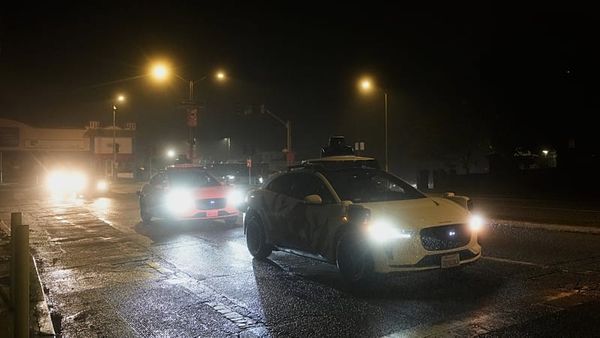
When it comes to getting blissed out in a hot spring, there are few better places in the world than Colorado. The state has 93 known geothermal areas running through the spine of the Rocky Mountains, with natural springs of all stripes. The Colorado Historic Hot Springs Loop links up 23 hot springs in eight different places via an 800-mile driving route from Denver through the soaring Rockies.
Hot water springs up all over the Rockies thanks to the geological phenomenon of plate tectonics, which pushed its craggy peaks toward the heavens and resulted in hot water bubbling up along the range. The discovery of gold there in 1858 led to the Colorado gold rush and along with the influx of fortune-seekers came the establishment of mountain railways and Victorian hot-spring resorts – a tradition that continues today.
Soaking here is said to have many health benefits thanks to the minerals infused into the water from the surrounding rocks, including calcium, magnesium, sodium, potassium, silica and lithium. Magnesium can alleviate muscle cramps and joint pain, silica has skin-rejuvenating properties, and lithium provides a nervous system reset and acts as a natural mood booster.
Read more on Colorado travel:
This year and next, several resorts along the loop will see expansions and new additions, so I set out with the tough task of testing them out.
I’ve picked my favourites, from Japanese-style meditation tubs to vapour caves and pools designed to mimic the great hot springs of the world. Many of the resorts also offer overnight accommodation, meaning you can bliss out in the warm water under the stars, or soothe aching muscles after a long day of snow sports.
Glenwood Springs
Glenwood Springs, around 160 miles west of Denver, was one of the first towns in the state to develop its hot springs. Like many of the springs across southwest Colorado, its source waters were known to the Indigenous Ute people, who called it “Yampah” (meaning big medicine). European settlers arrived in the mid-19th century and, several decades later, a group of British investors purchased the land and springs and developed the world’s largest hot springs pool – a title Glenwood Hot Springs still holds, producing some 3.5 million gallons of water every day in a giant pool 123 metres (405ft) long and 30m (100ft) wide. Additions are under way here, with new pools being constructed to open in 2024.
The water flowing through Glenwood created natural, underground vapour caves, which were also known to the Indigenous Ute people. These today form the Yampah Spa Vapor Caves – natural caverns in which mineral water flows through the rocks at a sizzling 52C, creating natural, geothermally heated steam baths.
In 2015, a second resort opened in Glenwood – Iron Mountain Hot Springs – which this year added 10 new pools for a total of 16. Some utilise the local water, while the 10 newest pools in the WorldSprings section each has its water adapted to mimic a famous hot pool around the world. So you can soak in Glenwood’s water, then pop over to Iceland’s Blue Lagoon, sample the Buddhist bicarbonate waters of Osaek Hot Spring in South Korea, or float in the Dead Sea.
Where to stay
The Hotel Denver is located in the centre of town. A heritage property from 1915, it’s a five-minute walk from Glenwood Hot Springs.
Rooms available from{{#price}}{{price}}per night{{/price}}{{^price}}Check availability for dates and prices{{/price}}
Rates provided by Booking.com
Ouray
Twin Peaks Lodge is a Swiss-themed hotel with its own hot springs— (Megan Eaves)
Sitting in a narrow, V-shaped valley surrounded by jagged peaks, Ouray leans charmingly into its branding as the “Switzerland of America”. Its perfect main street hearkens to the gold mining days with preserved clapboard storefronts and wooden boardwalks. The hot springs here are renowned, rising up from fissures along the Uncompahgre River, whose waters formed the gorge in which Ouray lies. The Ute people first settled here and considered the hot springs sacred (Uncompahgre is a Ute word meaning something like “where water makes the rock red” – a reference to the springs), but they lost ownership of the land and the rights to use the hot springs in 1881 when the US government forcibly removed the Native American community to a reservation further south.
In 1877, the first indoor swimming pool and bathhouse opened, and the open-air public pool now in use opened in 1920. Soaking here is cheap and cheerful and can get crowded – there are larger pools for lap swimming and kids’ activities, while an adult-use area contains several mid-sized pools with hotter temperatures. A couple of hotels in town have also harnessed the springs into their own onsite pools for people seeking a soak-and-stay experience.
Where to stay
Twin Peaks Lodge is a Swiss-themed hotel with its own hot springs – there are nine soaking pools plus two swimming pools and a cold plunge.
Rooms available from{{#price}}{{price}}per night{{/price}}{{^price}}Check availability for dates and prices{{/price}}
Rates provided by Booking.com
Durango
Private cedar soaking tub at Durango Hot Springs— (Megan Eaves)
The hot springs at Durango in southwest Colorado date back to 1000-1200BC, when the Indigenous Ancestral Puebloan people, who built the great cliff cities of Mesa Verde not far away, utilised the mineral springs along the Animas River. In 1874, an ex-soldier named Frank Trimble moved to town. Suffering from rheumatism and old war wounds, Trimble began bathing in the waters and declared himself healed within a month. In 1882, he built the first hotel on the grounds of what is today’s Durango Hot Springs Resort & Spa, set on a tree-lined hillside a few miles north of town. After a series of owners, burned-down hotels and a 30-year closure, the resort came under new ownership and underwent a $14m transformation, reopening in 2019. Its 32 hot pools and five Japanese-style, cedar private tubs are still fed by the same spring water enjoyed by the Ancestral Puebloans. There are also cold plunges, a concession stand, a food truck, a spa and – most importantly – relaxing views over the San Juan Mountains.
Where to stay
Durango Hot Springs is in the process of building onsite accommodation to open in 2024. In downtown Durango, the General Palmer Hotel, built in 1898, retains its Old West ambience with rich wood decor, red velvet curtains and vintage furnishings. It’s virtually next door to the Durango and Silverton historic railway.
Rooms available from{{#price}}{{price}}per night{{/price}}{{^price}}Check availability for dates and prices{{/price}}
Rates provided by Booking.com
Pagosa Springs
The Springs Resort in Pagosa Springs along the San Juan River— (Megan Eaves)
Somehow continuing to be a very well-kept Colorado secret, the tiny town of Pagosa Springs has what is arguably the mother lode when it comes to hot springs: the world’s deepest geothermal spring. When it was recorded as a Guinness World Record, the spring’s depth was measured at 305m (1,002ft) – as far as the scientists’ instruments could reach, but they never found the bottom or recorded its total depth. The “Mother Spring”, as she is known, is a bubbling, simmering pool of sulphuric water along the San Juan River, which flows down through town from its headwaters at the Continental Divide a few miles up in the mountains. Yes, the sulphur-rich water smells like eggs, but true soaking aficionados know that this provocative stink offers antibacterial properties that soothe and help heal the skin and create a natural relaxant and detoxifier.
The Springs Resort has harnessed the waters into 25 pools, all kept at different temperatures, on terraces overlooking the river. There’s a bathhouse, restaurants and drinks served to the pools, as well as a spa and a huge range of hot spring-themed wellness activities, like aqua yoga. The river itself offers a natural cold plunge accessible from the terraces, or you can avail of the unaltered hot spring waters bubbling up along its banks for free (water is not temperature controlled, so this is bathing at your own risk). The resort is currently expanding with a newly opened section of its hotel and a suite of new soaking pools to open in 2024.
Where to stay
The Springs Resort offers 24-hour soaking privileges to overnight guests, with special access to and from the rooms via key-carded gates. Doubles from £311.
Joyful Journey
A soak with a view at Joyful Journey Hot Springs— (Megan Eaves)
Sparsely populated Saguache County sits in a bowl defined by mountain ranges nearly 300km (189 miles) southwest of Denver. Only 1.9 people per square mile live in a 3,170 square-mile area of this sweeping rangeland in the San Luis Valley. Several hot springs well up here, notably Joyful Journey Hot Springs. Its aquifer, known as “Mineral Hot Springs”, is also utilised by nearby Valley View, a clothing-optional soaking resort. Joyful Journey stands on a wide plain overlooking distant mountains and calls itself a “retreat” rather than a “resort” to emphasise its focus on both physical and spiritual wellbeing. With three pools and two jacuzzis, it is small, quiet and intimate, and the views of the Sangre de Cristo mountains from the water are spectacular. These springs are rich in lithium, which is said to be excellent for calming the nervous system, promoting brain health and reducing anxiety.
Where to stay
Joyful Journey has an onsite inn with hotel rooms and camping in yurts and tipis, as well as RV hookups and tent sites. Doubles from £215.
Mount Princeton
Natural creekside hot pools at Mount Princeton— (Megan Eaves)
Set in the narrow Chalk Creek Canyon, surrounded by the 14,000ft peaks of the Collegiate Range, Mount Princeton Hot Springs is, for my money, one of the most picturesque hot springs resorts in the world. It’s just a few miles from St Elmo – a high-elevation ghost town that was once a thriving mining town. In 1860, a way station, hotel, and railway depot were built here to serve people travelling on competing railway lines over the extremes of Tincup Pass, bound for the mines of Ashcroft and Aspen. The first resort came a few years later in 1884 when miners from the Mary Murphy Mine constructed a large hotel. The current main lodge – an enormous log structure – was built in 1965 and underwent a total remodel in the 2000s, adding 30 cabins, cascading soaking pools and a spa.
The current resort has seven geothermal pools, including a series of Japanese-inspired cascade pools and a large lap pool. Undoubtedly, though, its drawcard is the series of natural rock pools along the Chalk Creek riverside, where hot water flows from the ground into the creek. Pick your way down into the river and you can rearrange the rocks to create warmer or cooler pools using cold, rushing water. The spa also offers water yoga and other cardio classes in a pool of warm geothermal water. Mount Princeton is also working on a project that would be the first in Colorado to generate electricity from the same hydrothermal system that produces the springs.
Where to stay
Mount Princeton has creekside suites, cabins, lodge rooms and cliffside rooms spread quietly over the valley adjacent to the springs.
Rooms available from{{#price}}{{price}}per night{{/price}}{{^price}}Check availability for dates and prices{{/price}}
Rates provided by Booking.com
Travel essentials
Getting there
British Airways and United both fly non-stop to Denver from Heathrow airport. Car hire in Denver is straightforward; you can also take the train from Denver to Glenwood Springs with Rocky Mountaineer or Amtrak.
More information
Check cohotspringsloop.com for full details on all of the resorts on the hot springs loop.







